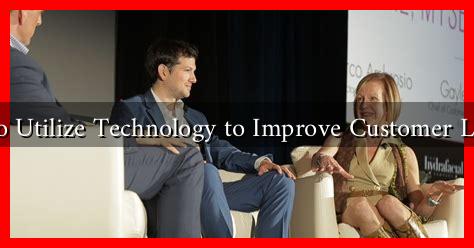-
Table of Contents
How to Utilize Technology to Improve Customer Loyalty
In today’s fast-paced digital landscape, customer loyalty is more crucial than ever. With numerous options available at their fingertips, consumers can easily switch brands if their expectations are not met. Therefore, businesses must leverage technology to foster customer loyalty effectively. This article explores various technological strategies that can enhance customer loyalty, supported by examples and statistics.
Understanding Customer Loyalty
Customer loyalty refers to a consumer’s commitment to repurchase or continue using a brand’s products or services. Loyal customers are not only more likely to make repeat purchases but also tend to advocate for the brand, leading to new customer acquisition through word-of-mouth. According to a study by Help Scout, acquiring a new customer can cost five times more than retaining an existing one. Thus, investing in customer loyalty is not just beneficial; it is essential for long-term success.
Leveraging Data Analytics
Data analytics plays a pivotal role in understanding customer behavior and preferences. By analyzing customer data, businesses can tailor their offerings and marketing strategies to meet specific needs. Here are some ways to utilize data analytics:
- Personalized Marketing: Use customer data to create personalized marketing campaigns. For instance, Amazon uses browsing history and purchase data to recommend products, significantly increasing conversion rates.
- Customer Segmentation: Segment customers based on their behavior and preferences. This allows for targeted promotions that resonate with specific groups, enhancing engagement.
- Predictive Analytics: Implement predictive analytics to anticipate customer needs and behaviors. This can help in crafting proactive strategies to retain customers before they consider switching brands.
Implementing Customer Relationship Management (CRM) Systems
CRM systems are invaluable tools for managing customer interactions and data throughout the customer lifecycle. They help businesses improve customer relationships, streamline processes, and enhance profitability. Here’s how CRM can boost customer loyalty:
- Centralized Customer Information: A CRM system consolidates customer data, making it easier for businesses to understand their customers’ needs and preferences.
- Improved Communication: Automated follow-ups and personalized messages can be sent to customers, ensuring they feel valued and appreciated.
- Feedback Management: CRM systems can facilitate the collection of customer feedback, allowing businesses to address concerns promptly and improve their offerings.
Utilizing Social Media for Engagement
Social media platforms are powerful tools for building customer loyalty. They provide a space for brands to engage with customers directly and foster a sense of community. Here are some effective strategies:
- Interactive Content: Use polls, quizzes, and live Q&A sessions to engage customers actively. This not only entertains but also makes customers feel involved with the brand.
- Customer Service: Provide prompt responses to customer inquiries and complaints on social media. A study by Hootsuite found that 54% of consumers prefer social media for customer service.
- User-Generated Content: Encourage customers to share their experiences with your products on social media. This not only builds community but also serves as authentic marketing.
Implementing Loyalty Programs
Loyalty programs are a tried-and-true method for enhancing customer retention. Technology can streamline these programs, making them more effective:
- Mobile Apps: Develop a mobile app that allows customers to track their rewards and receive personalized offers. Starbucks’ app is a prime example, offering rewards and easy payment options.
- Gamification: Incorporate gamification elements into loyalty programs, such as points systems or challenges, to make the experience more engaging.
- Data-Driven Rewards: Use customer data to tailor rewards that resonate with individual preferences, increasing the likelihood of participation.
Conclusion
In conclusion, leveraging technology to improve customer loyalty is not just a trend; it is a necessity in today’s competitive market. By utilizing data analytics, implementing CRM systems, engaging on social media, and creating effective loyalty programs, businesses can foster deeper connections with their customers. As customer expectations continue to evolve, those who embrace technology will not only retain their existing customers but also attract new ones, ensuring long-term success. Remember, a loyal customer is not just a repeat buyer; they are a brand ambassador who can significantly impact your business’s growth.

